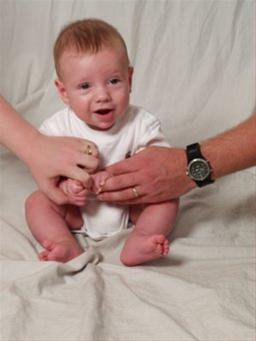Eisenhower Presidential Campaign Ad - "I Like Ike" Animated Television C...
From the information under the video:
The Draft Eisenhower movement was the first successful political draft of the 20th century to take a private citizen to the Oval Office. It was a widespread American grassroots political movement that eventually persuaded Dwight D. Eisenhower to run for President. The movement culminated in the 1952 presidential election in which Eisenhower won the Republican nomination and defeated Democrat Adlai Stevenson to become the 34th President of the United States.
Dwight Eisenhower enrolled at the United States Military Academy, West Point, New York, in June 1911, and graduated in 1915. He steadily rose through the ranks of the U.S. military from 1915 to 1952.
At the end of the War in Europe on May 8, 1945, Eisenhower had supreme command of all operational Allied forces. Eisenhower was named Chief of Staff of the U.S. Army in November 1945, and in December 1950 was named Supreme Commander of the North Atlantic Treaty Organization (NATO), and given operational command of NATO forces in Europe. Eisenhower retired from active service on May 31, 1952. During this period Eisenhower served as president of Columbia University from 1948 until 1953.
The time from 1951 to 1952 has been called the American "Winter of Discontent." Americans were frustrated by the stalemated Korean War, with no clear end in sight, and unpopular President Harry S. Truman would not commit to seeking another term.
Draft Eisenhower movements had emerged ahead of the 1948 election, mostly in the Democratic Party; in July 1947 Truman offered to run as Eisenhower's running mate on the Democratic ticket if Douglas MacArthur won the Republican nomination. The movements reemerged in 1951 in both the Republican and Democratic parties, as Eisenhower had not yet announced any political party affiliation. Eisenhower believed he needed to remain nonpartisan, citing Army regulation 600-10.18.i forbidding partisan political activity by serving officers. This did not stop Republican admirers from coining the phrase "I like Ike" in the spring of 1951 as a symbol of their hopes.
The "I Like Ike" slogan was created when Peter G. Peterson of Market Facts, (Secretary of Commerce for Nixon), did research for the campaign and found out more people wanted to talk about how they trusted and felt comfortable with Ike, but didn't like to describe their views on all the issues. Thus, 'I Like Ike' went on all Ike paraphernalia.
Democrats sought a candidate who could help them retain the White House after Truman, who many felt could not win re-election. Hoping that Eisenhower would run on behalf of the Democratic Party, Truman wrote to Eisenhower in December 1951, saying: "I wish you would let me know what you intend to do." Eisenhower responded: "I do not feel that I have any duty to seek a political nomination." Republican New York Governor Thomas E. Dewey and Senator Henry Cabot Lodge, Jr. of Massachusetts meanwhile worked to persuade him to run through an organization called "National Citizens for Eisenhower."
On January 6, 1952, Lodge entered Eisenhower's name into the New Hampshire primary ballot without Eisenhower's permission. Afterward, Eisenhower finally stated that if offered the Republican nomination for the presidency, he would accept it. However, for several weeks, Eisenhower was a non-participant and would not speak out on his views or declare himself a candidate. Through January and February Eisenhower wrote to friends and family members saying that he was flattered by the movement, but did not really believe it was as widespread as the media implied.
On February 8 the movement demonstrated its size. A Draft Eisenhower rally was scheduled to be held in Madison Square Garden on that day. The event planners expected no more than the arena's 16,000-person capacity, but over 25,000 showed up, and the New York police and fire marshals could get very few people to leave. Then, on February 11, famous businesswoman and aviator Jacqueline Cochran flew to Paris to show Eisenhower Serenade to Ike, a tribute film she had made. The film visibly touched Eisenhower, who began to shed tears when, at the end of the film, Cochran toasted to Eisenhower, saying, "To the President of the United States." Eisenhower later wrote of the event, describing his inner turmoil by stating, "I've never been so upset in years."
On March 11, 1952, Eisenhower won the New Hampshire primary against Taft by 50% to 38% and captured all of the Republican delegates. Eisenhower announced that he was "astounded" and "moved" by the results and told a reporter, "Any American who would have that many other Americans pay him that compliment would be proud or he would not be an American." After being convinced by this evidence, he announced his candidacy the next day.
Another source (nearly verbatum.....hhhmmmm)
http://www.eisenhowerinstitute.org/about/living_history/winter_1952.dot
DRAFT ALLEN WEST FOR PRESIDENT 2012!












0 Comments:
Post a Comment
<< Home